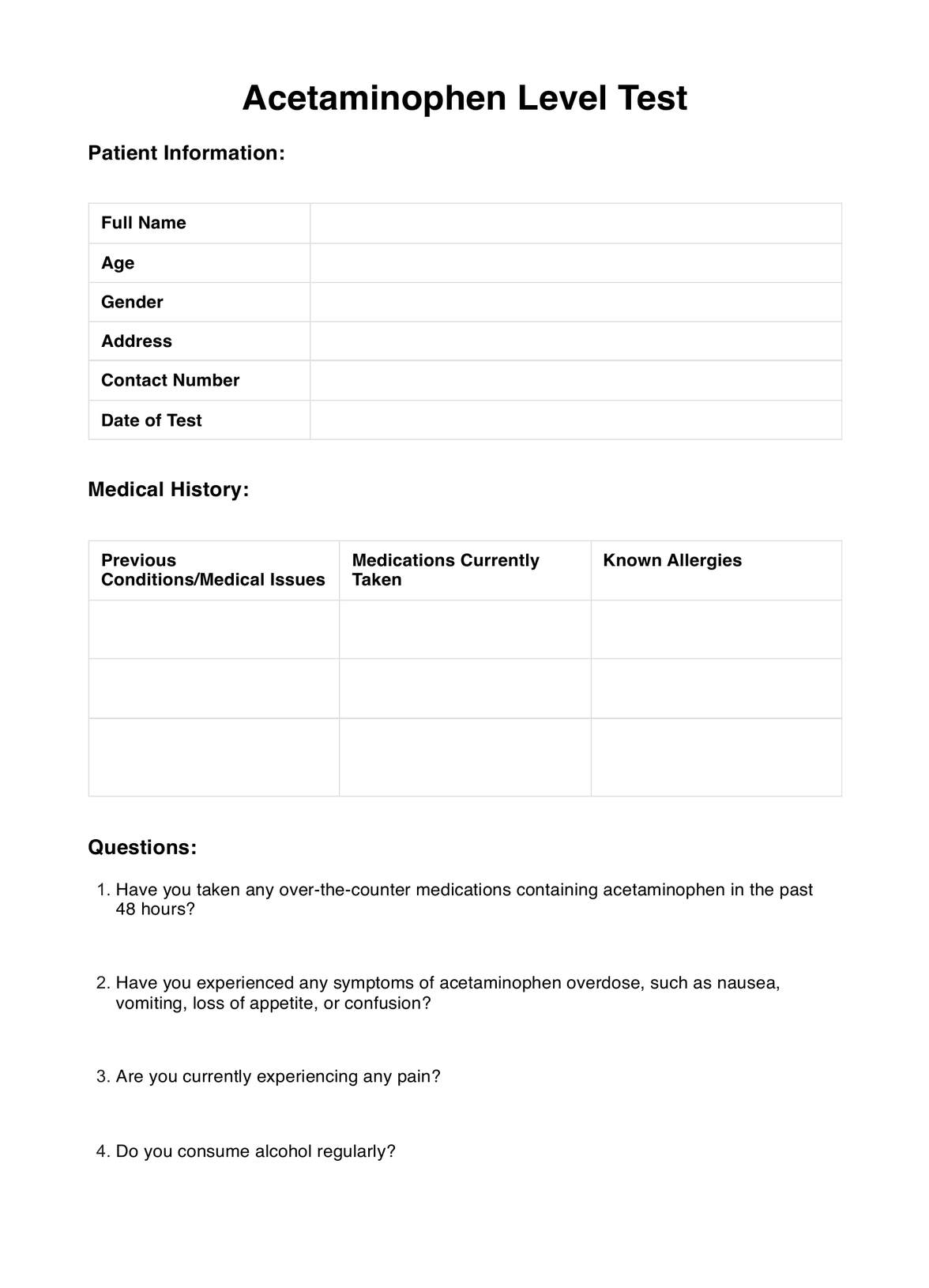The Acetaminophen Level Test on Carepatron is based on validated research. It provides an intuitive interface for straightforward interpretation, ensuring you're informed every step of the way.

Acetaminophen Level Test
Discover the importance of the Acetaminophen Level Test with Carepatron's comprehensive guide. Empower your health decisions with clarity and confidence!
Use Template
Acetaminophen Level Test Template
Commonly asked questions
Absolutely! Carepatron uses cutting-edge encryption techniques to ensure all medical data remains confidential and only accessible to authorized individuals.
Yes, with just a few taps, you can seamlessly share your test results with any healthcare professional, ensuring timely and effective communication.
EHR and practice management software
Get started for free
*No credit card required
Free
$0/usd
Unlimited clients
Telehealth
1GB of storage
Client portal text
Automated billing and online payments











